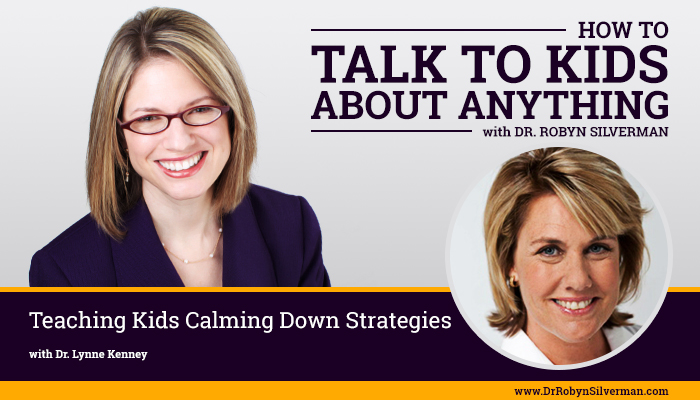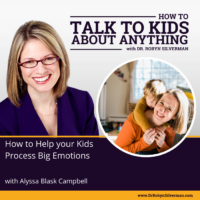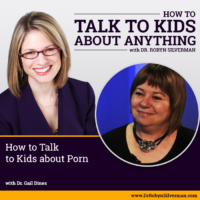Podcast: Play in new window | Download
Subscribe: Apple Podcasts | RSS | More
How to Talk to Kids about Big Feelings and Calming Down (Re-Release)
This podcast will focus on helping children cope with big feelings. As a parent or a teacher, you might have experienced moments where children experience overwhelming feelings such as anger, anxiety or agitation leading to fitful moments, tantrums and melt-downs. In this episode, we are talking with Dr. Lynne Kenney about how to help children get calm down on the spot and develop better tools and strategies for coping with BIG feelings. One of the very first well-loved episodes of How to Talk to Kids about Anything, this episode is being re-released because (1) it has awesome, evergreen content that any parent or teacher would want to put into play right away, (2) we just passed National Stress Awareness Day, which is the first Wednesday of November, and these strategies are great for helping our stressed-out children and finally, (3) with so much focus on anxiety these days, we could use these outstanding, innovative yet practice tools in our back pocket. Shownotes have been bolstered! Listen to it for the first time or as if it were the first time as it’s been 2.5 years—you’ll love it!
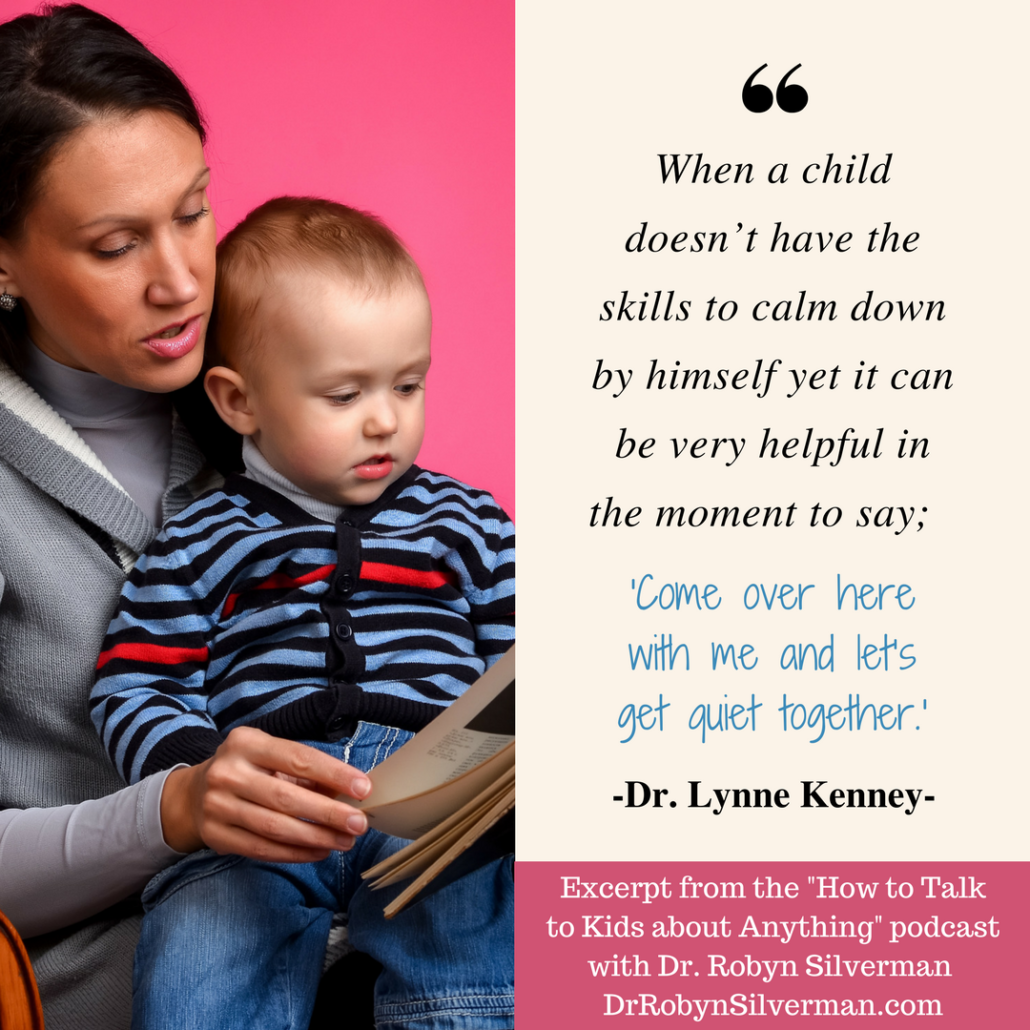 As a parent or a teacher, you might have had moments where children experience overwhelming feelings such as anger, anxiety or agitation leading to fitful moments, tantrums and melt-downs. Who hasn’t? Statistics tell us that 20% of young children have tantrums daily—this is normal. And as children get older, some still have trouble dealing with over-the-top feelings. And let’s be honest- at times these feelings don’t only challenge children—but they challenge us, as adults, as well. Today we are talking with Dr. Lynne Kenney about how to help children get calm on the spot and develop better tools and strategies for coping with BIG feelings.
As a parent or a teacher, you might have had moments where children experience overwhelming feelings such as anger, anxiety or agitation leading to fitful moments, tantrums and melt-downs. Who hasn’t? Statistics tell us that 20% of young children have tantrums daily—this is normal. And as children get older, some still have trouble dealing with over-the-top feelings. And let’s be honest- at times these feelings don’t only challenge children—but they challenge us, as adults, as well. Today we are talking with Dr. Lynne Kenney about how to help children get calm on the spot and develop better tools and strategies for coping with BIG feelings.
Lynne Kenney, Psy.D., is a Harvard-trained psychologist, mother of two, an international educator, author and pediatric psychologist in Scottsdale, AZ. Dr. Kenney’s works include the Social-Emotional Literacy program Bloom Your Room™; Musical Thinking; Bloom: 50 things to say, think and do with anxious, angry and over-the-top-kids and 70 Play Activities For Better Thinking, Self-Regulation, Learning and Behavior all of which you can find through www.lynnekenney.com.
The podcast provides:
- What are big feelings and why do they get so intense?
- How we can help kids to develop self-regulation, thought and feeling management skills to function better in the moment.
- The triggers that make children’s feelings escalate or cause a meltdown.
- Why and how to help kids develop better self-regulation skills
- The three systems that are under-utilized for as tools for calming and self regulation.
- How to “manage the moment” (before, during and after).
- The 4 S’s of calming (based off of Harvey Karp’s work)
- How music, movement and balls can help children get and remain calm.
- Countless tips and scripts to provide parents and educators with on-the-spot calming techniques.
- Tips & Scripts: What to do and say after the tantrum that makes the real difference.
Important Messages:
-
- Research over the past 10 years or so the body of research on the importance of self-regulation in early childhood has
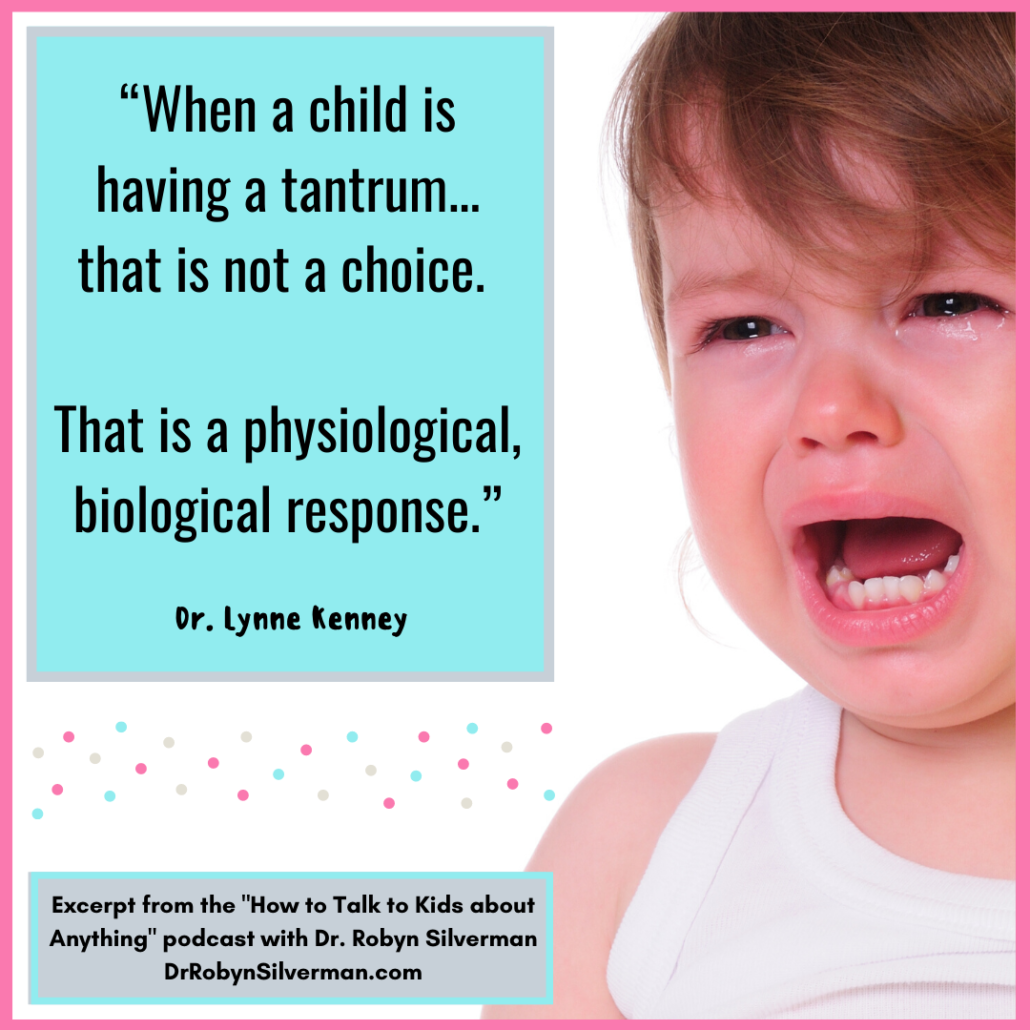 grown. We now see self-regulation skills including the ability to attend to the words and action of others, think through our actions and manage our emotions and impulses as foundational skills. These skills underlie our ability to learn, behave and socialize.
grown. We now see self-regulation skills including the ability to attend to the words and action of others, think through our actions and manage our emotions and impulses as foundational skills. These skills underlie our ability to learn, behave and socialize. - In Bloom, Musical Thinking and 70 Play Activities, Lynne Kenney and her colleagues provide direct instruction to children about how their brain is built and how it works. They identify The Thinker, Caveman and Boots as integral parts of our brain and they teach children how to use their cognitive skills or executive functions to coach their brains into more adaptive thoughts, words and actions.
- When we teach children, it is the process of how they think and not only the content they learn that makes them better prepared to succeed in school, sports and life, we take the mystery out of thinking and self-regulation empowering eh children to build mastery, and confidence as they become more skillful.
- Planning previewing, practicing a better end to the story the next time. “Remember, you said you’d put your special dinosaurs on the other side of the room, and the dinosaurs your brother could play with on this side of the room…”
- The vagal, vestibular and auditory systems are underutilized as tools for calming and self-regulation. While every child is different, often tapping into these systems can calm a child in anywhere from a few seconds to a few minutes.
- Children co-regulate with us. If we are calm, children are more likely to stay calm.
- Activate the thinker and calm the caveman: If you haven’t planned, practiced and prepared for the escalation, then everyone will get triggered and flip over the mountain.
- Self-regulation is your ability to manage your energy state in a specific circumstance when things are going well or NOT going well. Self-regulation is energy management!
- Teach children about “swaddle.” It doesn’t have to be a weighted blanket- it could be socks, hat over the ears, provide them a play where they can “go inward.” An older child can simply close their eyes and go within.
- Sway: May I hold your hand? (You don’t always need to say; “I see you,” you can turn it around to “I feel me.” “I feel stressed, could we sway together?” Go slowly! “Can you lead me?” You can mirror without touch.
- Sing: Just start singing. When things aren’t working, just start singing.
- Best moment is when the kids start using these strategies with friends.
 Mantra: My child isn’t trying to make me angry. I’m trying to get calm so my child can get calm.
Mantra: My child isn’t trying to make me angry. I’m trying to get calm so my child can get calm.- Don’t have to consequence in the moment- think about getting calm first!
- Change your physical level with your child- shows your child they are no longer threatened. Sit on the floor.
- Use these skills to calm your children:
- Empathy and Action: Your feelings look really BIG, may I hold them for you.
- Movement: Bounce a ball
- Cognitive-Motor: Do a switch task, hold this, now may I hold it, now can you hold it in your left hand, now can you pass it to my right hand (Megan McClelland)
- Vagal: Hum, sing, chant, deep breaths
- Vestibular: Rock, sway, swing, bounce and rock (the rocking V)
- Olfaction: Pleasing smells, essential oils
- The Music Carpet Ride
- Wrap like a burrito
- Music such as The Listening Program – fully orchestrated music
- Anger mountain
- Research over the past 10 years or so the body of research on the importance of self-regulation in early childhood has
Notable Quotables:
- “When our brain is young or developing, often we have really powerful wants, needs and expectations. And often when we are
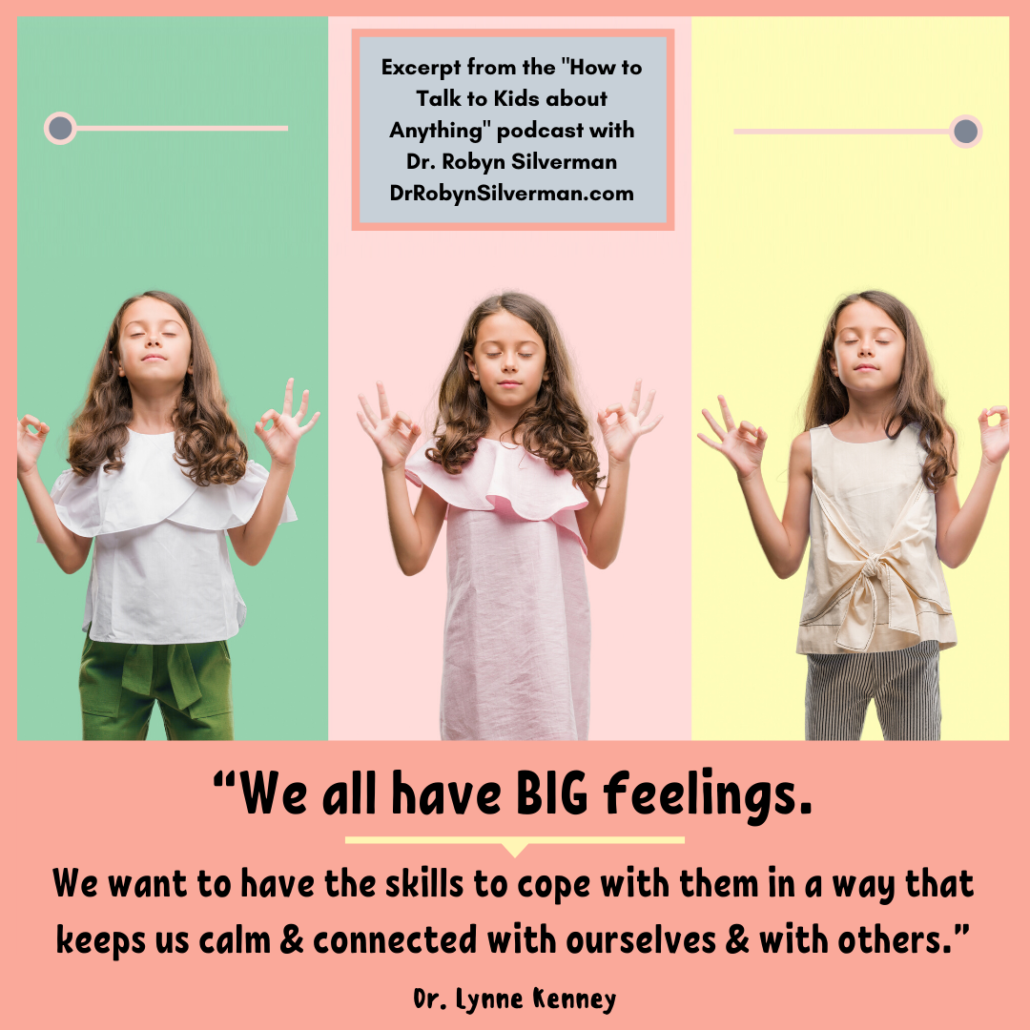 young…we don’t have the cognitive capacity to recognize that we are having a want, need or expectation. So we think the world is just going to respond to us as we expect. And then when it doesn’t, we actually experience physiologically, a sense of loss or grief.” ~Dr. Lynne Kenney
young…we don’t have the cognitive capacity to recognize that we are having a want, need or expectation. So we think the world is just going to respond to us as we expect. And then when it doesn’t, we actually experience physiologically, a sense of loss or grief.” ~Dr. Lynne Kenney - “We want to be connected and calm. We want to be liked. Children are not wishing to have a tantrum and throw themselves on the floor. They want to know what to do in the moment so they can feel better themselves.” ~Dr. Lynne Kenney
- “When a child is having a tantrum or a fit or being cognitively inflexible or really difficult, that is not a choice. That is a biological, physiologically response.” ~Dr. Lynne Kenney
- “We all have big feelings. The thing is, we want to have the skills to cope with our big feelings in a way that continues to keep us calm and connected with ourselves and with others.” ~ Dr. Lynne Kenney
- When a child doesn’t have the skills yet: “Come over here with me and let’s get quiet together.” ~Dr. Lynne Kenney
- “When things are not working, start singing!” ~Dr. Lynne Kenney
- “If you are out of control, sit down and just breathe.” ~Dr. Lynne Kenney
- When a child needed to get calm; “would you like to close your eyes and go within?”
- “Your cognitive thoughts and mantras will drive your behavior.”
- “Don’t feel like you always have to change or punish or consequence in the moment, think about getting calm first.”
- “It’s important to get in there and have the conversation with your child to prepare for the next time to put an ending and a closure on what just happened [the tantrum, the escalation] so that they learn from it and then they can move forward and start at a point that is different from where they started this time.” ~Dr. Robyn Silverman
Resources:
- www.lynnekenney.com
- Magic Carpet Ride: http://www.lynnekenney.com/the-music-carpet-ride/
- Bloom: 50 Things to Say, Think & Do with Anxious, Angry or Over-the-Top Kids
- Musical Thinking
- 70 Play Activities for Better Thinking, Self-Regulation, Learning and Behavior
- Bloom Your Room
- Anger mountain: http://www.lynnekenney.com/climbing-down-anger-mountain-time-in-free-printable/
- Steven Porges (polyvagal theory and healing trauma) http://stephenporges.com/

